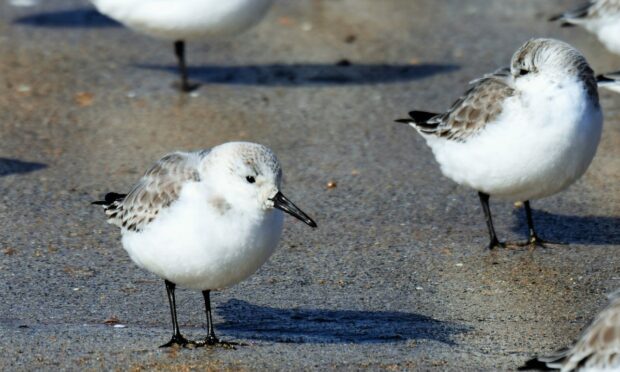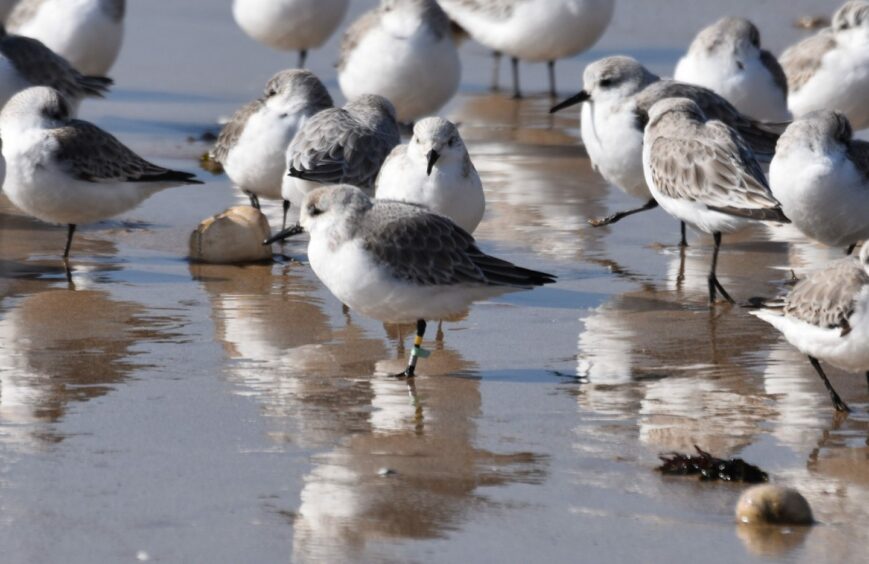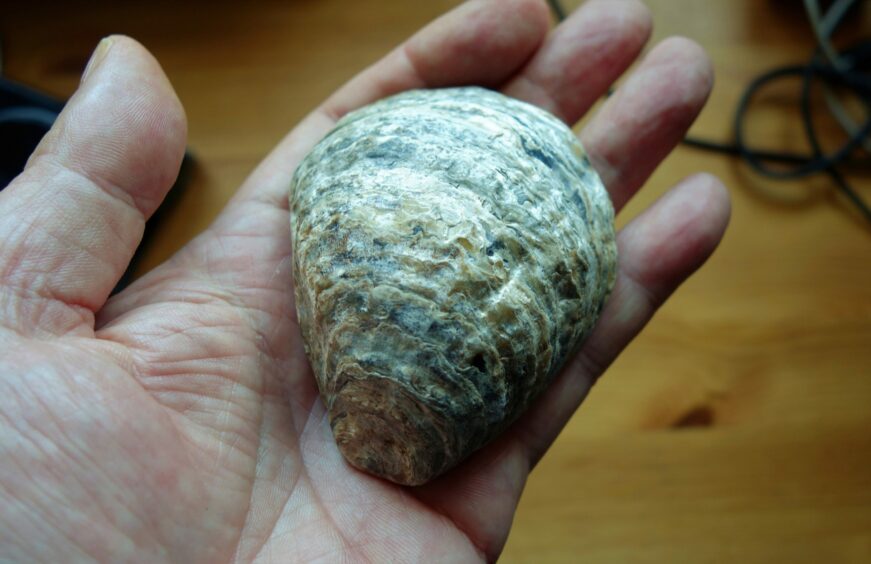A walk along an east coast bay brought me two exciting discoveries that underlined the amazing and diverse natural world around us.
For the first, we need to go back to Orkney in April 2018, when the Orkney Ringing Group (ORG) was ringing sanderlings making their way back to their summer breeding grounds in Greenland.
Sanderlings are stunning pearly-plumaged small wading birds, which winter in the British Isles and nest in the high Arctic.
Fast forward four years, and as I walked along the beach at Largo Bay in the Firth of Forth recently, a flock of about 30 sanderlings danced by the edge of the rising tide, running this way and that on twinkling toes.
Wonderful to watch
They were wonderful to watch, and relatively confiding, enabling me to reel-off many photographs.
On examining the images later, I realised that a couple of sanderlings in the flock had coloured leg rings.
These rings play a vital role in enhancing our knowledge of birds such as sanderlings, and the migratory movements they undertake.
The greater our understanding of birds’ behaviour and ecology, the better we can protect them and ensure effective conservation strategies.
A bit of research led me to tracking down Colin Corse of ORG and he confirmed that both sanderlings had been ringed on Sanday in Orkney in spring 2018.
He told me: “The two birds you saw, as well as others we have ringed, are regularly recorded on the Fife coast in winter, and they are very site faithful to places such as Largo Bay.
“We have had sightings of Scottish ringed sanderlings in Greenland on their breeding grounds, and sightings and re-traps of birds ringed as chicks in Greenland.
“On their way back to Greenland in spring, they stop-off on Sanday to feed upon the rich supply of fly larvae found in rotting seaweed banks.”
Native oyster
The other Largo Bay discovery was the half-shell of a native oyster (Ostrea edulis).
Formerly abundant around Scottish coasts, a combination of pressure from harvesting and water quality issues led to the decline of the Forth oyster fishery, which ceased by 1920, and by 1957 the species was believed to be extinct in the Firth of Forth.
A similar pattern of sharp decline occurred in many other parts of the British Isles.
My oyster find led me to getting in touch with expert Prof Bill Sanderson of Heriot-Watt University.
He told me it was most likely that this was an oyster shell that had lain in the seabed sediment for a considerable period.
He said: “I’ve found some in the Dornoch Firth that turned out to be 8,000 years old when carbon dated!”
A pity, perhaps, that my find wasn’t related to a natural population resurgence in the Forth.
However, an exciting and recently launched initiative – Restoration Forth – intends to reinvigorate oyster populations in the area as part of its action plan, which will complement another scheme already established in the Dornoch Firth.
It seems these intriguing molluscs might well become a familiar part of our precious marine environment once more.












